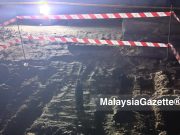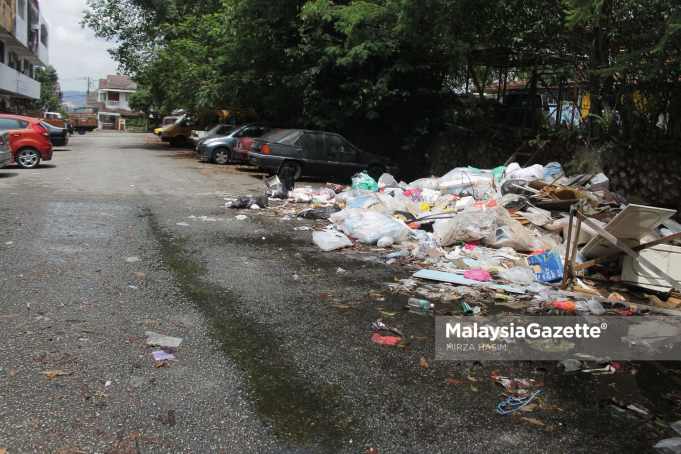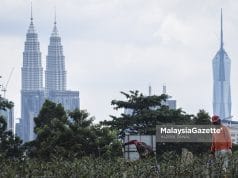By Nurayuni Johari
KUALA LUMPUR – Rubbish on the roads, which then, clogged the drain has been identified as the biggest contributor to the flash flood Kuala Lumpur.
Besides that, weak water flow and drainage system that could not support the capacity of heavy downpour due to the change of climate further worsen the situation.
Executive Director of Project Execution from the Kuala Lumpur City Hall (DBKL), Datuk Azmi Abdul Hamid said that the local authority is seeking the best and suitable mechanism to overcome the flash flood issues.
The mechanism includes, to monitor drains and upgrade them if the need arises.
“Earlier this week (12 and 13 April), heavy downpour and flash flood happened in the capital city. For example, exceptionally high rainfall happened in Cheras, causing the area surrounding the Football Stadium in Cheras to be flooded up to 0.3 meter.
“Generally, the main factor was due to the water flow infrastructure which could not support the high water capacity at one time. There would be no problem if it rains at a usual rate of 20 milimetres (mm).
“Secondly, the heavy rain also brought the existing rubbish on the roads, such as dried leaves or plastic, that caused the drains to clog and caused serious flash flood,” he told MalaysiaGazette.

As of now, according to him, there are 17 hotspots in risk of flash flood in Kuala Lumpur.
Meanwhile, DBKL also identified 11 Parliament areas with 171 locations that are frequently affected by flash flood.
Those areas are Bukit Bintang (30), Batu (25), Segambut (23), Cheras (22), Titiwangsa (18), Seputeh (14), Wangsa Maju (11), Bandar Tun Razak (9), Kepong (9) , Setiawangsa (7) and the Pantai Valley (3).
According to Azmi, a special committee has been set up to monitor the ‘hotspots’ to identify the frequency of flash flood and a special officer will act to overcome the incident.

PIX: FAREEZ FADZIL / MalaysiaGazette / 15 APRIL 2021
The team, he said, would monitor the area through closed circuit television and public complaints.
Through these information channels, DBKL would deploy its team to clean the affected area so that the water flow can flow smoothly.
Last Tuesday, flash flood and heavy rain along with strong wind hit the capital city and caused trees to fall, electricity poles to topple, signboards collapsed and ramadan baazar tents destroyed. -MalaysiaGazette
Read More:
IKUTI KAMI DI MEDIA SOSIAL
X : @malaysiagazette
Instagram : @malaysiagazette
Youtube MG : MalaysiaGazette TV
Youtube MGFlash : MG Flash
TikTok : Malaysia Gazette
Threads : Malaysia Gazette
Whatsapp Channel : Malaysia Gazette
Telegram : Malaysia Gazette
Spotify : MG Podcast
Kongsi:
- Click to share on Facebook (Opens in new window) Facebook
- Click to share on X (Opens in new window) X
- Click to share on Telegram (Opens in new window) Telegram
- Click to share on WhatsApp (Opens in new window) WhatsApp
- Click to share on LinkedIn (Opens in new window) LinkedIn
- Click to share on Threads (Opens in new window) Threads

















